Abstract
1. Pancreatic beta-cells oscillate synchronously when grouped in islets. Coupling seems essential to maintain this oscillatory behaviour, as isolated cells are unable to oscillate. This allows the islet to be used as a model system for studying the role of coupling in the generation of oscillatory patterns. 2. Pairs of beta-cells were intracellularly recorded in islets. beta-Cells oscillated synchronously. Propagated voltage deflections were observed as a function of glucose concentration and of the distance between the recording electrodes. Space constants were smaller in the silent than in the active phases, suggesting a higher intercellular connection in the active phases. 3. Coupling coefficients and estimated coupling conductances were larger in the active than in the silent phases. 4. Coupling coefficients and coupling conductances changed dynamically and in phase with the membrane potential oscillations, pointing to an active modulation of the gap junctions. 5. We hypothesize a role for coupling in the generation of the oscillatory events, providing different levels of permeability dependent on the state of conductance during the oscillatory phases.
Full text
PDF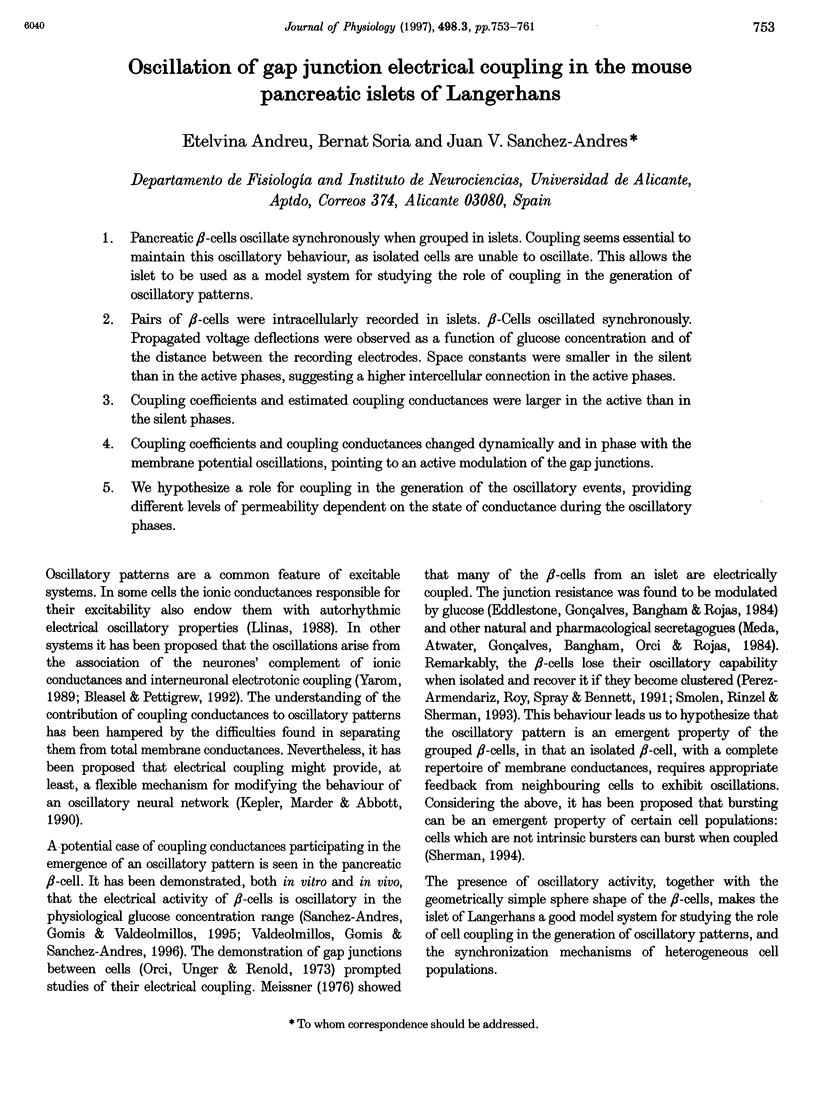
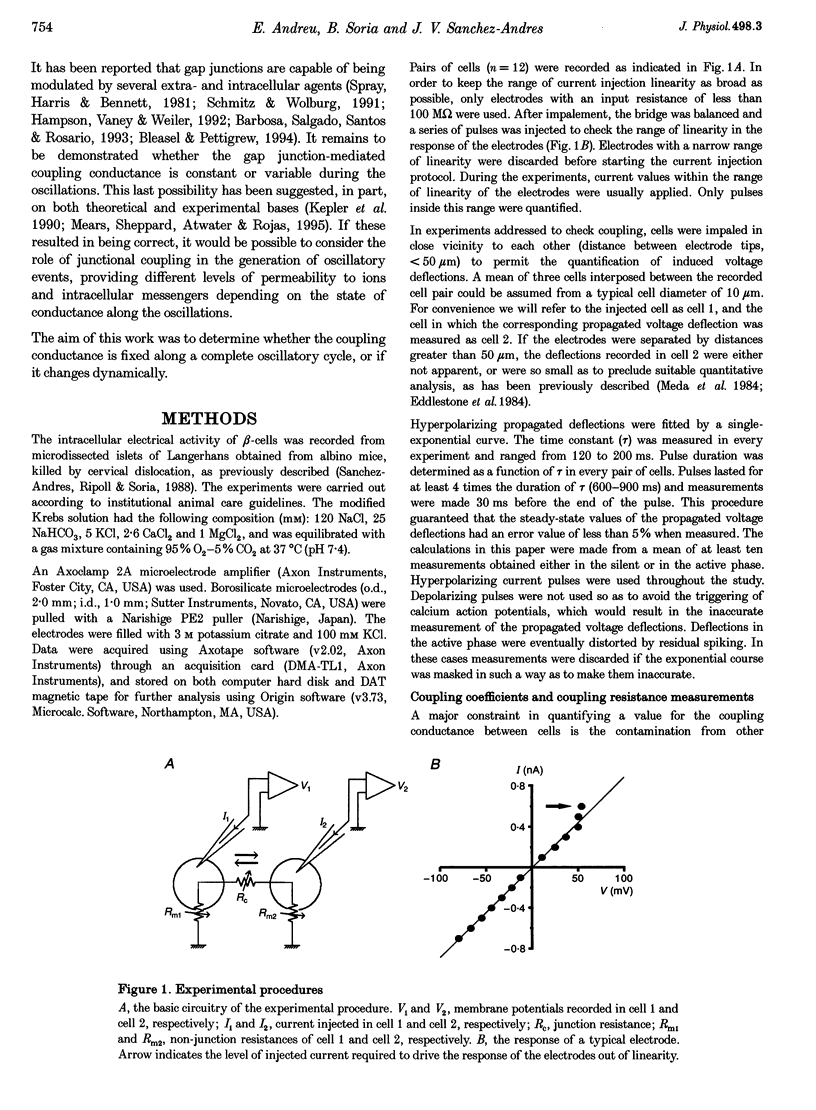
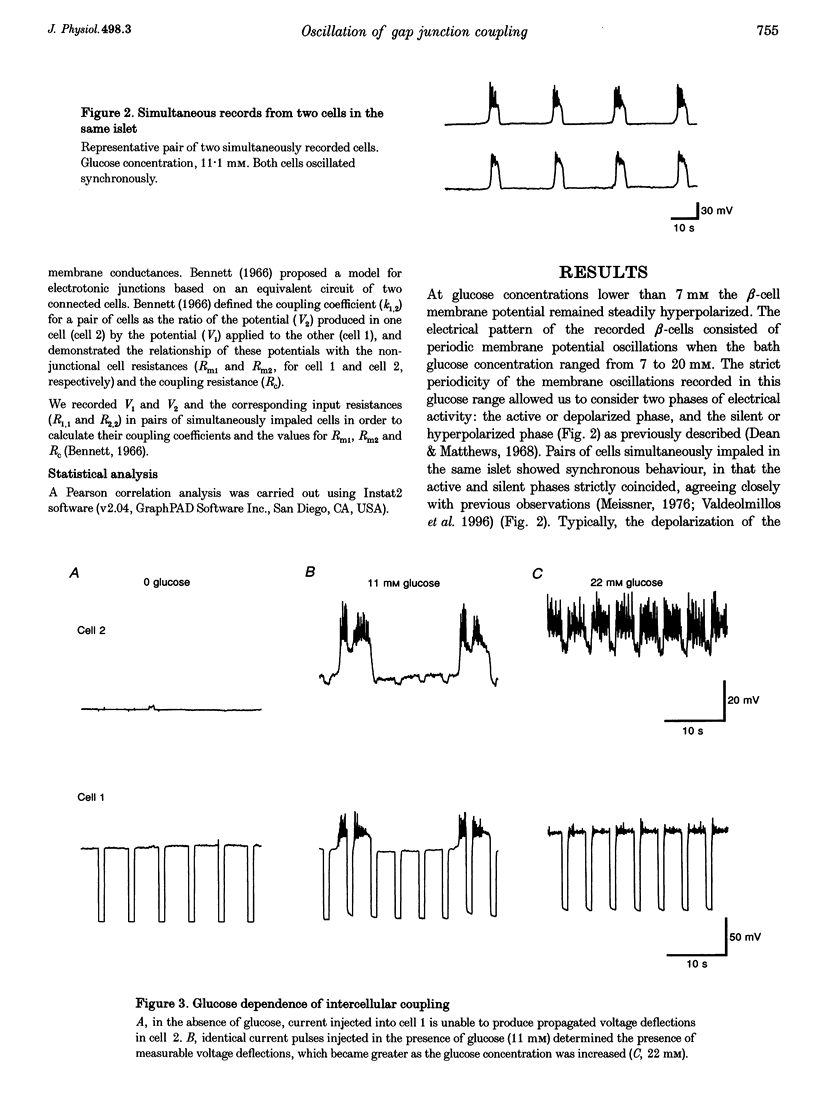
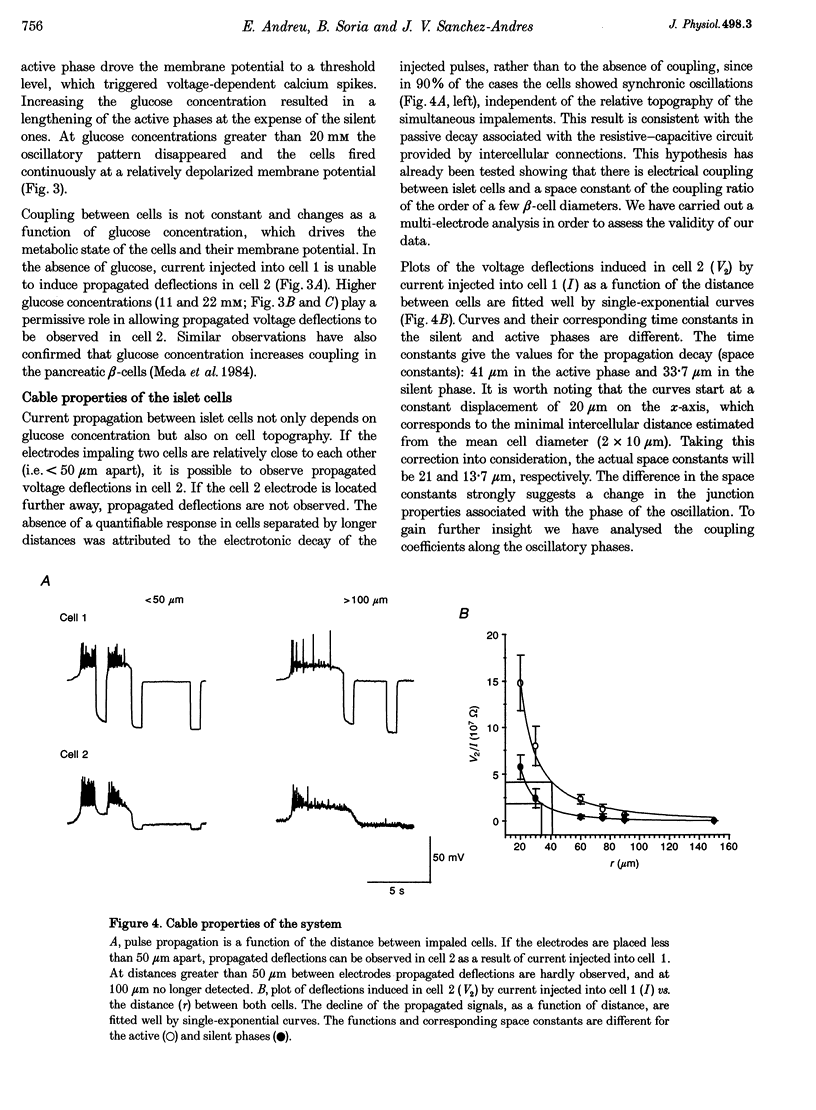
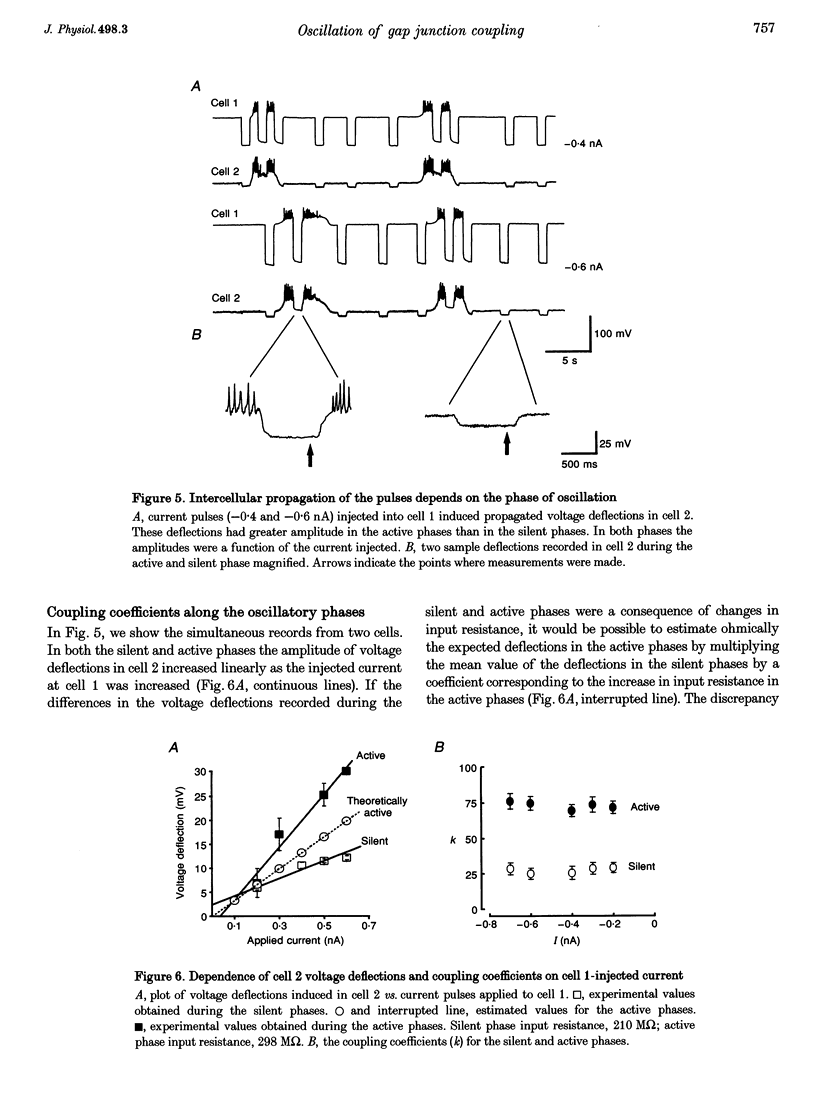
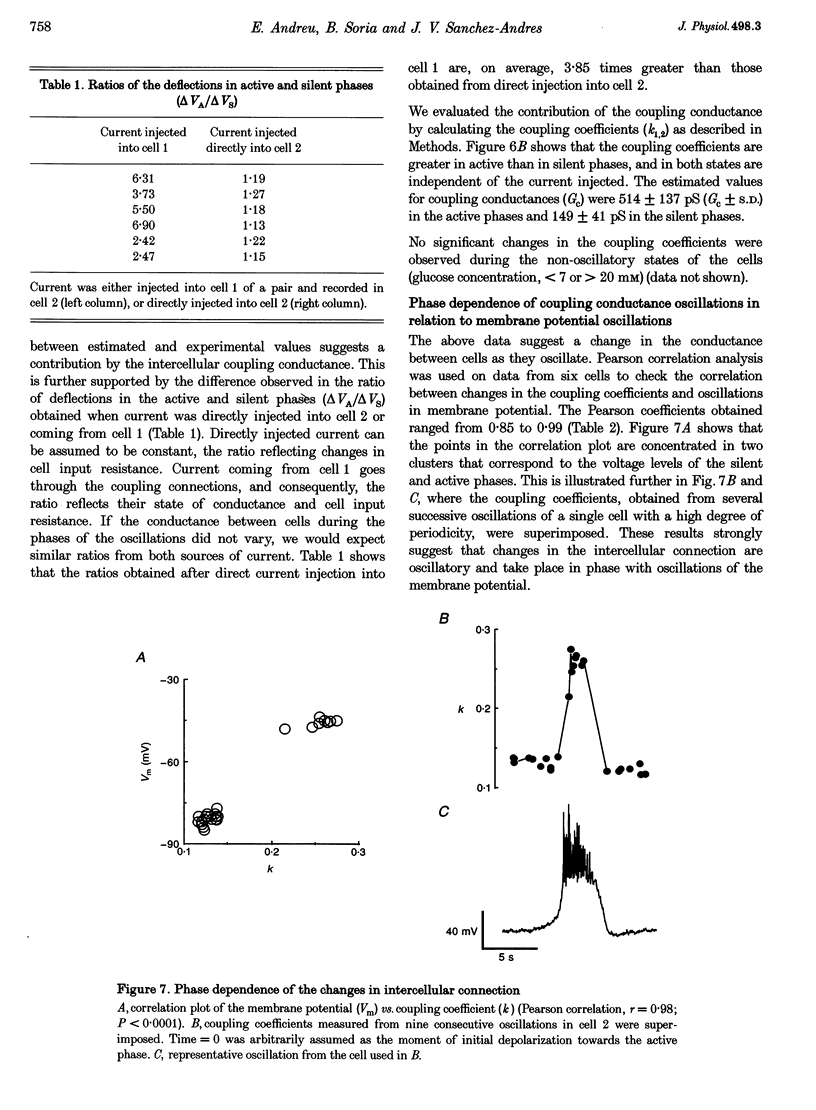
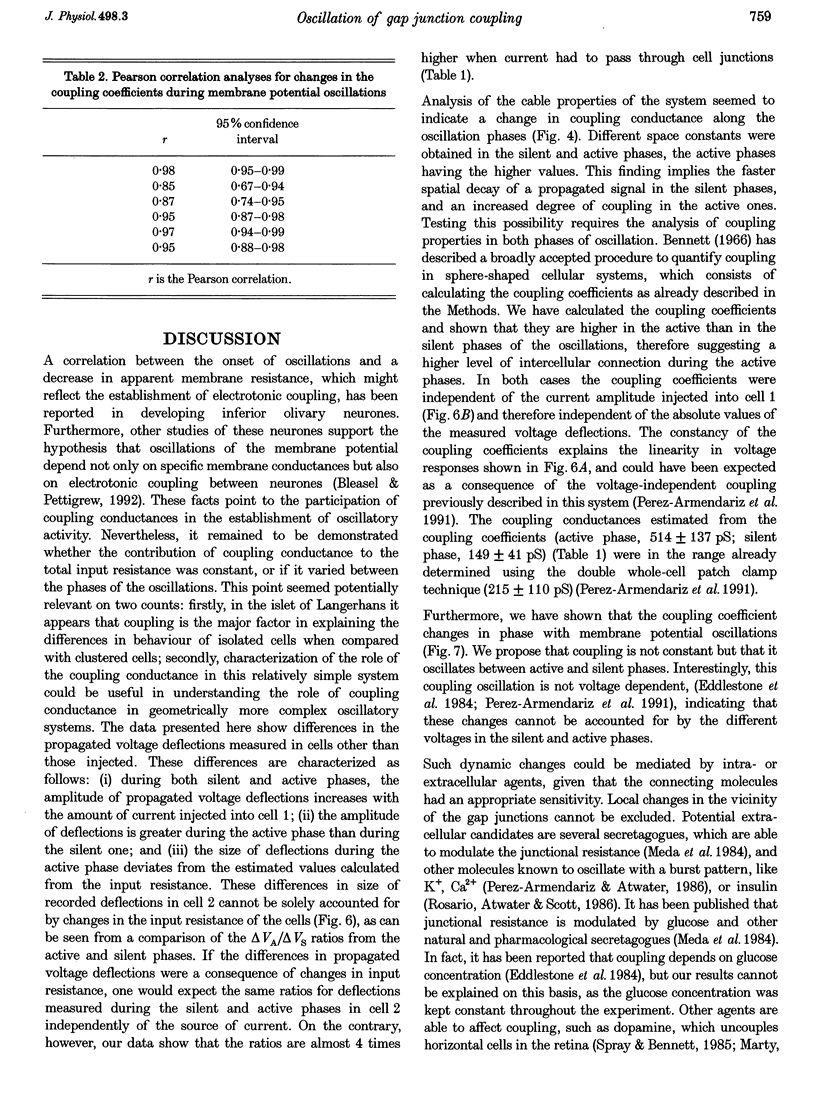
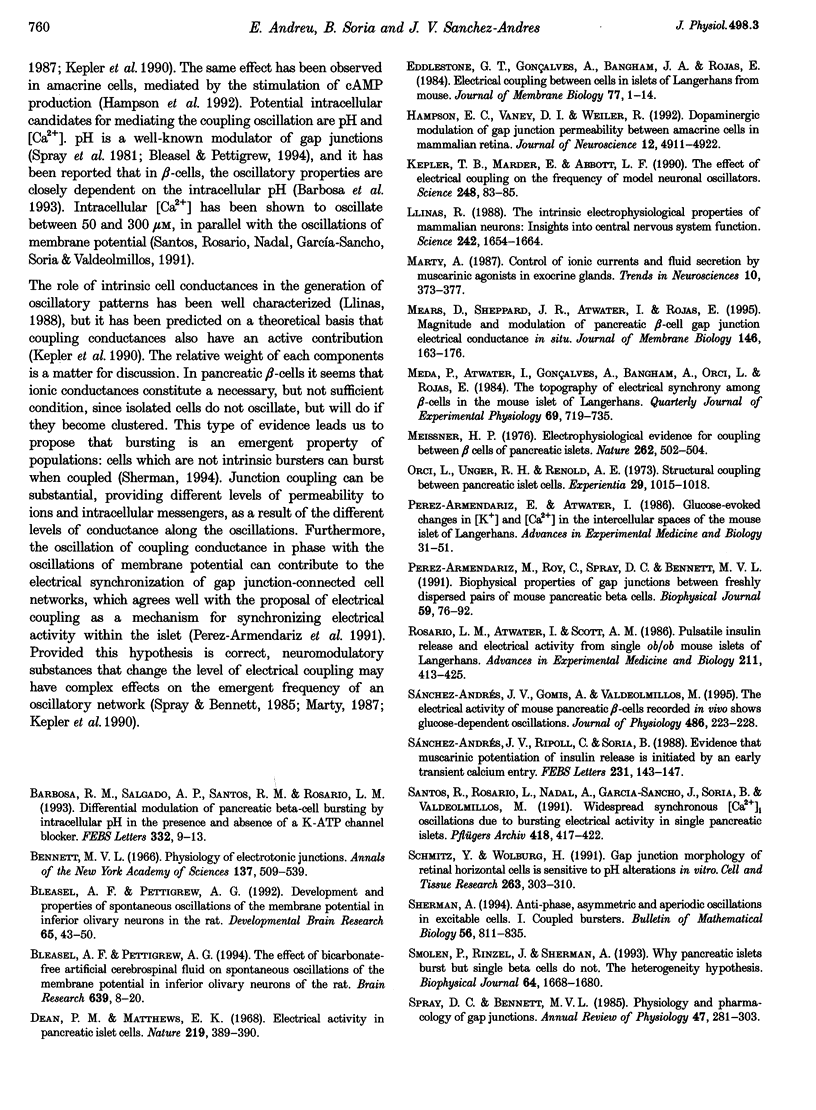
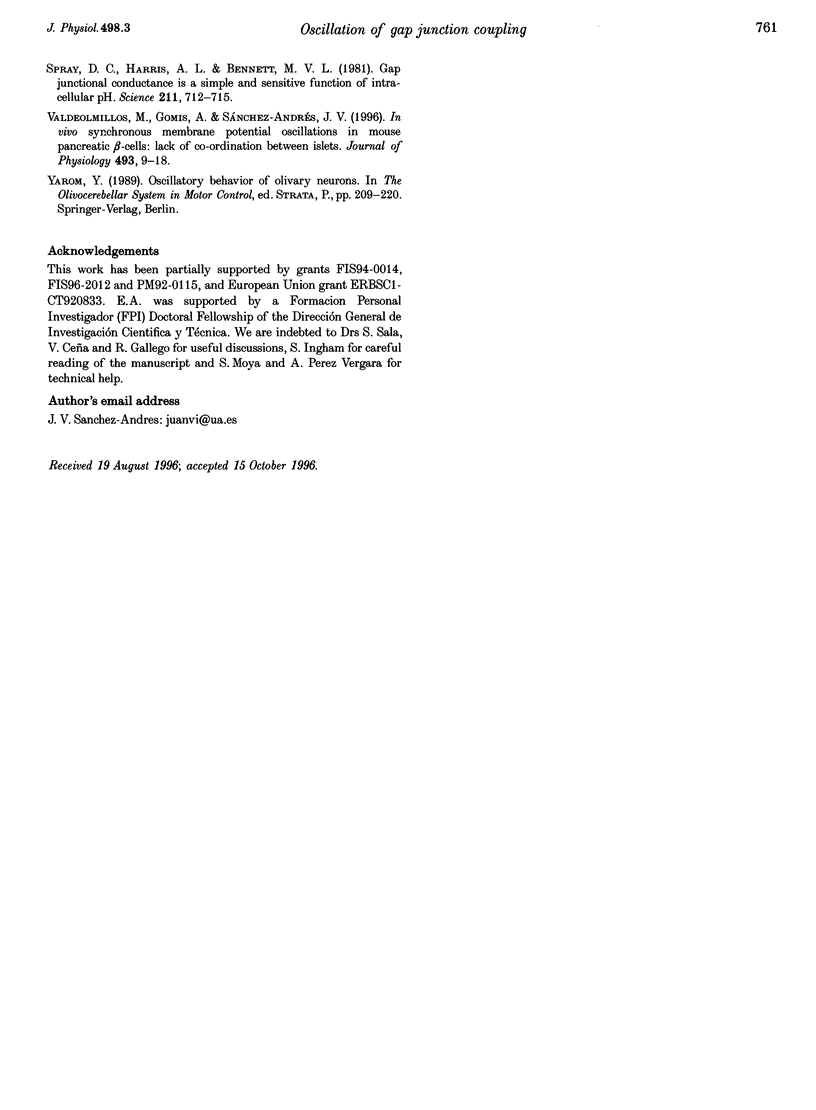
Selected References
These references are in PubMed. This may not be the complete list of references from this article.
- Barbosa R. M., Salgado A. P., Santos R. M., Rosário L. M. Differential modulation of pancreatic beta-cell bursting by intracellular pH in the presence and absence of a K-ATP channel blocker. FEBS Lett. 1993 Oct 11;332(1-2):9–13. doi: 10.1016/0014-5793(93)80471-6. [DOI] [PubMed] [Google Scholar]
- Bennett M. V. Physiology of electrotonic junctions. Ann N Y Acad Sci. 1966 Jul 14;137(2):509–539. doi: 10.1111/j.1749-6632.1966.tb50178.x. [DOI] [PubMed] [Google Scholar]
- Bleasel A. F., Pettigrew A. G. Development and properties of spontaneous oscillations of the membrane potential in inferior olivary neurons in the rat. Brain Res Dev Brain Res. 1992 Jan 17;65(1):43–50. doi: 10.1016/0165-3806(92)90006-i. [DOI] [PubMed] [Google Scholar]
- Bleasel A. F., Pettigrew A. G. The effect of bicarbonate-free artificial cerebrospinal fluid on spontaneous oscillations of the membrane potential in inferior olivary neurons of the rat. Brain Res. 1994 Mar 7;639(1):8–20. doi: 10.1016/0006-8993(94)91758-2. [DOI] [PubMed] [Google Scholar]
- Eddlestone G. T., Gonçalves A., Bangham J. A., Rojas E. Electrical coupling between cells in islets of Langerhans from mouse. J Membr Biol. 1984;77(1):1–14. doi: 10.1007/BF01871095. [DOI] [PubMed] [Google Scholar]
- Hampson E. C., Vaney D. I., Weiler R. Dopaminergic modulation of gap junction permeability between amacrine cells in mammalian retina. J Neurosci. 1992 Dec;12(12):4911–4922. doi: 10.1523/JNEUROSCI.12-12-04911.1992. [DOI] [PMC free article] [PubMed] [Google Scholar]
- Kepler T. B., Marder E., Abbott L. F. The effect of electrical coupling on the frequency of model neuronal oscillators. Science. 1990 Apr 6;248(4951):83–85. doi: 10.1126/science.2321028. [DOI] [PubMed] [Google Scholar]
- Llinás R. R. The intrinsic electrophysiological properties of mammalian neurons: insights into central nervous system function. Science. 1988 Dec 23;242(4886):1654–1664. doi: 10.1126/science.3059497. [DOI] [PubMed] [Google Scholar]
- Mears D., Sheppard N. F., Jr, Atwater I., Rojas E. Magnitude and modulation of pancreatic beta-cell gap junction electrical conductance in situ. J Membr Biol. 1995 Jul;146(2):163–176. doi: 10.1007/BF00238006. [DOI] [PubMed] [Google Scholar]
- Meda P., Atwater I., Gonçalves A., Bangham A., Orci L., Rojas E. The topography of electrical synchrony among beta-cells in the mouse islet of Langerhans. Q J Exp Physiol. 1984 Oct;69(4):719–735. [PubMed] [Google Scholar]
- Meissner H. P. Electrophysiological evidence for coupling between beta cells of pancreatic islets. Nature. 1976 Aug 5;262(5568):502–504. doi: 10.1038/262502a0. [DOI] [PubMed] [Google Scholar]
- Orci L., Unger R. H., Renold A. E. Structural coupling between pancreatic islet cells. Experientia. 1973 Aug 15;29(8):1015–1018. doi: 10.1007/BF01930436. [DOI] [PubMed] [Google Scholar]
- Perez-Armendariz E., Atwater I. Glucose-evoked changes in [K+] and [Ca2+] in the intercellular spaces of the mouse islet of Langerhans. Adv Exp Med Biol. 1986;211:31–51. doi: 10.1007/978-1-4684-5314-0_3. [DOI] [PubMed] [Google Scholar]
- Pérez-Armendariz M., Roy C., Spray D. C., Bennett M. V. Biophysical properties of gap junctions between freshly dispersed pairs of mouse pancreatic beta cells. Biophys J. 1991 Jan;59(1):76–92. doi: 10.1016/S0006-3495(91)82200-7. [DOI] [PMC free article] [PubMed] [Google Scholar]
- Rosario L. M., Atwater I., Scott A. M. Pulsatile insulin release and electrical activity from single ob/ob mouse islets of Langerhans. Adv Exp Med Biol. 1986;211:413–425. doi: 10.1007/978-1-4684-5314-0_40. [DOI] [PubMed] [Google Scholar]
- Santos R. M., Rosario L. M., Nadal A., Garcia-Sancho J., Soria B., Valdeolmillos M. Widespread synchronous [Ca2+]i oscillations due to bursting electrical activity in single pancreatic islets. Pflugers Arch. 1991 May;418(4):417–422. doi: 10.1007/BF00550880. [DOI] [PubMed] [Google Scholar]
- Schmitz Y., Wolburg H. Gap junction morphology of retinal horizontal cells is sensitive to pH alterations in vitro. Cell Tissue Res. 1991 Feb;263(2):303–310. doi: 10.1007/BF00318772. [DOI] [PubMed] [Google Scholar]
- Sherman A. Anti-phase, asymmetric and aperiodic oscillations in excitable cells--I. Coupled bursters. Bull Math Biol. 1994 Sep;56(5):811–835. doi: 10.1007/BF02458269. [DOI] [PubMed] [Google Scholar]
- Smolen P., Rinzel J., Sherman A. Why pancreatic islets burst but single beta cells do not. The heterogeneity hypothesis. Biophys J. 1993 Jun;64(6):1668–1680. doi: 10.1016/S0006-3495(93)81539-X. [DOI] [PMC free article] [PubMed] [Google Scholar]
- Spray D. C., Bennett M. V. Physiology and pharmacology of gap junctions. Annu Rev Physiol. 1985;47:281–303. doi: 10.1146/annurev.ph.47.030185.001433. [DOI] [PubMed] [Google Scholar]
- Spray D. C., Harris A. L., Bennett M. V. Gap junctional conductance is a simple and sensitive function of intracellular pH. Science. 1981 Feb 13;211(4483):712–715. doi: 10.1126/science.6779379. [DOI] [PubMed] [Google Scholar]
- Sánchez-Andrés J. V., Gomis A., Valdeolmillos M. The electrical activity of mouse pancreatic beta-cells recorded in vivo shows glucose-dependent oscillations. J Physiol. 1995 Jul 1;486(Pt 1):223–228. doi: 10.1113/jphysiol.1995.sp020804. [DOI] [PMC free article] [PubMed] [Google Scholar]
- Sánchez-Andrés J. V., Ripoll C., Soria B. Evidence that muscarinic potentiation of insulin release is initiated by an early transient calcium entry. FEBS Lett. 1988 Apr 11;231(1):143–147. doi: 10.1016/0014-5793(88)80719-1. [DOI] [PubMed] [Google Scholar]
- Valdeolmillos M., Gomis A., Sánchez-Andrés J. V. In vivo synchronous membrane potential oscillations in mouse pancreatic beta-cells: lack of co-ordination between islets. J Physiol. 1996 May 15;493(Pt 1):9–18. doi: 10.1113/jphysiol.1996.sp021361. [DOI] [PMC free article] [PubMed] [Google Scholar]


